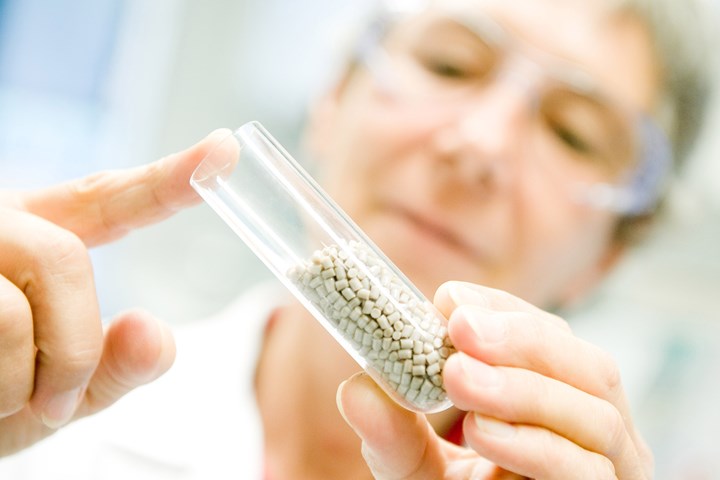Materials: Biobased PEEK for the Medical Technology Market
Evonik’s Vestakeep Fusion biobased PEEK implant materials have osteoconductive properties.
A new osteoconductive PEEK for the medical technology market that has been shown to improve the fusion between bone and the implant has been developed by Evonik (U.S. office in Parsippany, N.J.) further expanding the company’s existing portfolio of biomaterials for metal-free implants in long-term contact with the body. With this development the company is launching the new Vestakeep Fusion product line of next-generation PEEK-based implant materials.
The osteoconductive properties of Vestakeep iC4800, the first biomaterial in the Fusion PEEK line were achieved by using a special functional additive--biphasic calcium phosphate. This allows bone cells to adhere to implants more quickly, thus positively influencing fusion, so called osteointegration, at the boundary between the bone and the implant. In turn, this will accelerate bone fusion and convalescence. Vestakeep iC4800 boasts outstanding mechanical properties, which are similar to those of human bone. Like all other PEEK-based, high-performance polymers for medical technology applications, the newly developed biomaterial does not produce any artifacts in imaging processes such as X-ray or MRI. However, the additives provide a natural desired shadow for accurate placement and observation of the fusion process.

In addition to grade iC4800, Evonik will offer within the new PEEK Fusion product line the development of further exclusive, customer-specific materials with bioactive properties as so-called Vestakeep Fusion Select products. They are developed from a library of established osteoconductive substances with close involvement with each customer.
The company Vestakeep Fusion materials are being developed for processing using a variety of production technologies. For example iC4800 is offered both as a granulate and as a semifinished stock-shape product. Like all previous PEEK products, it can be milled, compression molded, and extruded as usual. Moreover, it can also be injection molded in the proven manner. It has been specially designed so that the functional additives are available on the surface and no film formation occurs. In collaboration with Swiss company Samaplast, which specializes in plastics engineering, Evonik has successfully demonstrated and documented the processing characteristics of the new biomaterial in injection molding.
Evonik’s polymer experts are also studying the possibility of developing a 3D printable filament with Vestakeep Fusion for next-generation PEEK that could be processed using the fused filament fabrication (FFF) additive production technology.
Related Content
-
Tracing the History of Polymeric Materials, Part 26: High-Performance Thermoplastics
The majority of the polymers that today we rely on for outstanding performance — such as polysulfone, polyethersulfone, polyphenylsulfone and PPS — were introduced in the period between 1965 and 1985. Here’s how they entered your toolbox of engineering of materials.
-
What's the Allowable Moisture Content in Nylons? It Depends: Part 2
Operating within guidelines from material suppliers can produce levels of polymer degradation. Get around it with better control over either the temperature of the melt or the barrel residence time.
-
What is the Allowable Moisture Content in Nylons? It Depends (Part 1)
A lot of the nylon that is processed is filled or reinforced, but the data sheets generally don’t account for this, making drying recommendations confusing. Here’s what you need to know.














